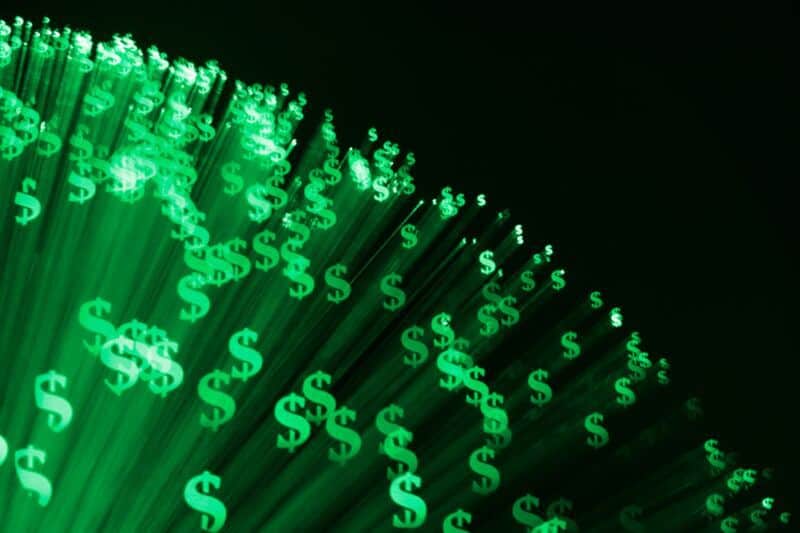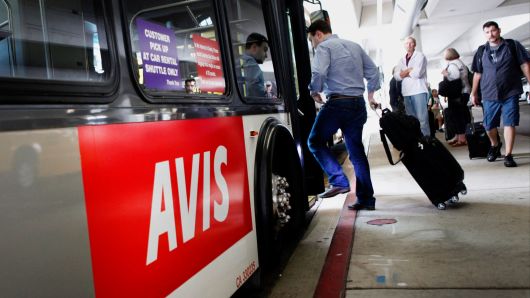
The average US home-Internet bill increased 19 percent during the first three years of the Trump administration, disproving former Federal Communications Commission Chairman Ajit Pai’s claim that deregulation lowered prices, according to a new report by advocacy group Free Press. For tens of millions of families that aren’t wealthy, “these increases are felt deeply, forcing difficult decisions about which services to forgo so they can maintain critical Internet access services,” Free Press wrote.
The 19 percent Trump-era increase is adjusted for inflation to match the value of 2020 dollars, with the monthly cost rising from $39.35 in 2016 to $47.01 in 2019. Without the inflation adjustment, the average household Internet price rose from $36.48 in 2016 to $46.38 in 2019, an increase of 27 percent.
The nominal increase in each of the three years was between 7.27 percent and 9.94 percent, while inflation each year ranged from 1.81 percent to 2.44 percent.
“That means the nominal increase in broadband bills was more than four times the rate of inflation during those three years,” Free Press said. The report is based on the Bureau of Labor Statistics (BLS) Consumer Expenditures Survey data, which does not yet include 2020.
Prices go up as costs for ISPs go down
On an annual basis, the average household Internet expenditures rose from $437.71 in 2016 to $556.50 in 2019. When adjusted for inflation to match the value of 2020 dollars, the cost rose from $472.25 in 2016 to $564.07 in 2019.
“[B]roadband prices consistently increase faster than the rate of inflation while the providers’ own costs do not. This makes this increasingly critical infrastructure service both more expensive in real terms to users and more profitable for the ISPs,” the report said.
Capital investment by Internet providers has dropped, “with substantial declines at large companies like AT&T (where 2020 investment was 52 percent below the 2016 total for the company on an inflation-adjusted basis) and Comcast (where 2020 cable segment investment was 22 percent below 2016’s level on an inflation-adjusted basis),” the report said.
In a press release, Free Press said that ISPs “grew their profits to record levels before and during the COVID-19 pandemic by increasing their prices during an unprecedented economic downturn,” and that “low-priced entry-level options for high-speed Internet service are disappearing, raising the adoption barrier for low-income families.”
“US broadband giants continue to raise prices and reap higher profits as their own investments decline,” said Free Press Research Director Derek Turner, the report author. “This is exactly the outcome we’d expect in a highly concentrated market that’s completely free of any regulatory oversight.”
Long-term trend of rising prices
Prices rose by a similar amount during the last three years of the Obama administration. Pai claimed that his deregulation of the broadband industry and repeal of net neutrality rules would reverse the trend of rising prices, bringing “cheaper Internet access to all Americans.” Instead, the prices kept rising.
President Biden said he wants to reverse the long-term trend by “working with Congress to find a solution to reduce Internet prices for all Americans.” Biden didn’t say exactly how he would lower prices, but the cable lobby is already slamming Biden for his suggestion that the government should help Americans get cheaper access to the Internet.
In the last three Obama years, the inflation-adjusted average monthly Internet expenditures rose from $32.25 in 2013 to $39.35 in 2016, a 22 percent rise. Nominal prices rose from $28.86 to $36.48 in those three years, a 26 percent increase.
The Free Press report highlighted the increase during the Trump years to point out that Trump’s and Pai’s policies didn’t lower prices as FCC Republicans and the broadband industry claimed they would, Turner told Ars. But the Obama administration also did little to push down broadband prices.
“Neither the Obama administration nor the Trump administration had policies in place to curb broadband price hikes,” Turner said. “At best, the FCC’s 2015 Open Internet Order sent a signal to ISPs that abusive data caps might raise a concern.”
There are different ways to measure Internet prices. Broadband lobby groups claim that prices are getting lower by pointing to a declining price-per-megabit or by tracking the advertised price of the “most popular [speed] tier” over time. But “the actual price customers pay every month,” which is often inflated by hidden fees, equipment rental charges, and data-cap charges, “is the most important metric to have for economic analysis and policymaking,” the Free Press report said.
Pai claimed in October 2020 that “real prices for broadband decreased by about a third” between 2015 and 2020. Free Press’ report said that “Pai cited an ISP industry-paid operative using quality-adjusted URS [FCC Urban Rate Survey] data to make a comparison between average quality-adjusted prices in 2015 and 2020, without noting the data is not reflective of actual price paid, and without confronting the impact that the decline in ‘Cadillac’ fiber tier prices had on the average values but not the median. This same data shows median prices rose during the same period that Pai cites.”
Many factors affect price, but it always goes up
Most of the 2013-2016 increase came in one year, between 2014 and 2015. The 2015 rise was largely due to “an acceleration into higher-priced/faster tiers at a time when the spread in price between them and lower tiers was big,” Turner said.
More specifically, 2015 “was a big year for growth in subscriptions above 100Mbps, as [the] DOCSIS 3 [cable Internet standard] was pushed more heavily, particularly by Comcast in the wake of the failed TWC deal,” Turner noted. Online video was also taking off, aided by streaming-quality improvements after Obama-era FCC regulation forced residential ISPs and other network operators to settle their differences and upgrade network links.
Streaming video helped spur people to buy “the more expensive 100Mbps+ tiers,” especially after the network-interconnection battles involving Netflix and network operators were resolved, Turner noted. Different factors pushed prices up during the Trump era. For example, former Time Warner Cable customers who had older, slower plans with promotional prices were “pushed into faster but more expensive Charter Spectrum tiers” after Charter bought the company in 2016, he said.
As we wrote in 2017, “many [Charter] customers saw their bills rise when their previous discounts expired and they were switched to non-promotional pricing.” People upgrading from DSL to fiber in the areas where providers bothered upgrading their networks also pushed up the average amount paid, Turner said.
“In short, what people are sold makes a difference to what the price paid is,” he said.
Biden targets hidden fees
Biden, in addition to promising some as-yet-unannounced method of reducing prices, proposed funding for municipal broadband networks and “lifting barriers that prevent” publicly owned networks “from competing on an even playing field with private providers.” This could eventually lead to the creation of more public networks, providing cheaper options and forcing incumbent ISPs to compete on price and quality.
Biden also proposed “requiring Internet providers to clearly disclose the prices they charge.” That would make it harder for ISPs to advertise low prices and then hit customers with a slew of hidden fees.
“In most markets, the prices are transparent to buyers. But not in the wired broadband market,” the Free Press report said. “Providers market promotional prices to new customers, but sometimes refuse to publish what the monthly charge will be after the introductory rate expires, or bury it in fine print. In addition, many wired ISPs impose additional charges such as data overage fees and equipment rental fees, as well as hidden fees like non-autopay penalties.”
























